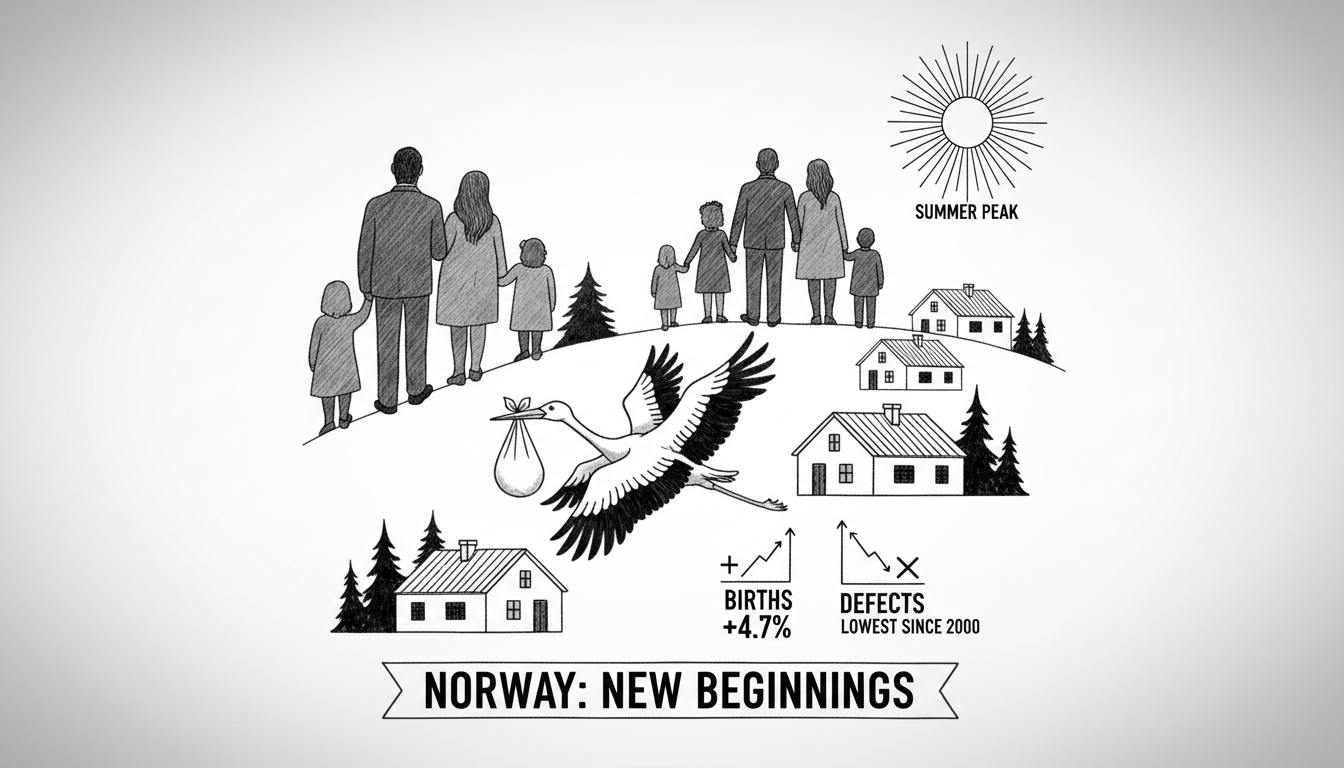New data reveals Norway is experiencing a notable rise in childbirth numbers alongside a decline in birth defects. The country recorded 54,472 births last year, marking a 4.7 percent increase compared to two years prior. This upward trend signals a positive demographic shift for the Nordic nation.
Medical officials note that most births occurred during the summer months from May through August. This seasonal pattern aligns with typical conception trends in Northern European countries where warmer months often correlate with increased birth rates nine months later.
The decline in birth defects represents particularly encouraging news. Only four percent of registered pregnancies received a birth defect diagnosis, the lowest rate recorded since 2000. This improvement suggests multiple factors are contributing to healthier pregnancy outcomes across Norway.
Medical experts point to several potential reasons for this positive development. Pregnant women are increasingly taking folic acid supplements, which help prevent certain types of neural tube defects. Improved prenatal screening also allows for earlier detection of potential issues.
Norway's comprehensive healthcare system plays a crucial role in these outcomes. The country provides universal healthcare coverage, including extensive prenatal care and support services. This system ensures that nearly all pregnant women receive consistent medical attention throughout their pregnancies.
The timing of defect detection raises important questions about reporting accuracy. Some pregnancy terminations due to birth defects might occur before official registration in medical systems. This could mean the actual improvement might be even more substantial than current data suggests.
For international observers, Norway's demographic trends offer valuable insights. The country maintains one of Europe's most robust welfare systems, with generous parental leave policies and strong support for families. These factors likely contribute to the increasing birth rates by making parenthood more accessible and affordable.
The rising birth numbers come as welcome news for Norway's long-term economic planning. Like many developed nations, Norway has faced concerns about aging populations and future workforce challenges. Increasing birth rates help address these demographic pressures.
Norwegian birth statistics consistently show strong outcomes compared to international averages. The country's combination of universal healthcare, comprehensive sex education, and strong social safety nets creates an environment supportive of healthy pregnancies and child development.
What does this mean for Norway's future? The data suggests the country is successfully addressing two important public health challenges simultaneously. Both increasing birth rates and declining defects point toward effective healthcare policies and public health initiatives.
The seasonal birth patterns also reflect cultural norms. The concentration of births in late spring and summer months aligns with traditional vacation periods and may indicate intentional family planning choices among Norwegian parents.
As other Nordic countries monitor these trends, Norway's experience could inform regional health policies. The successful combination of rising births and declining health complications demonstrates what comprehensive healthcare systems can achieve.

